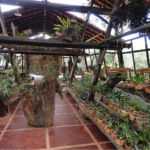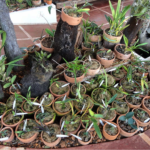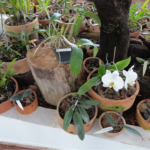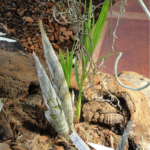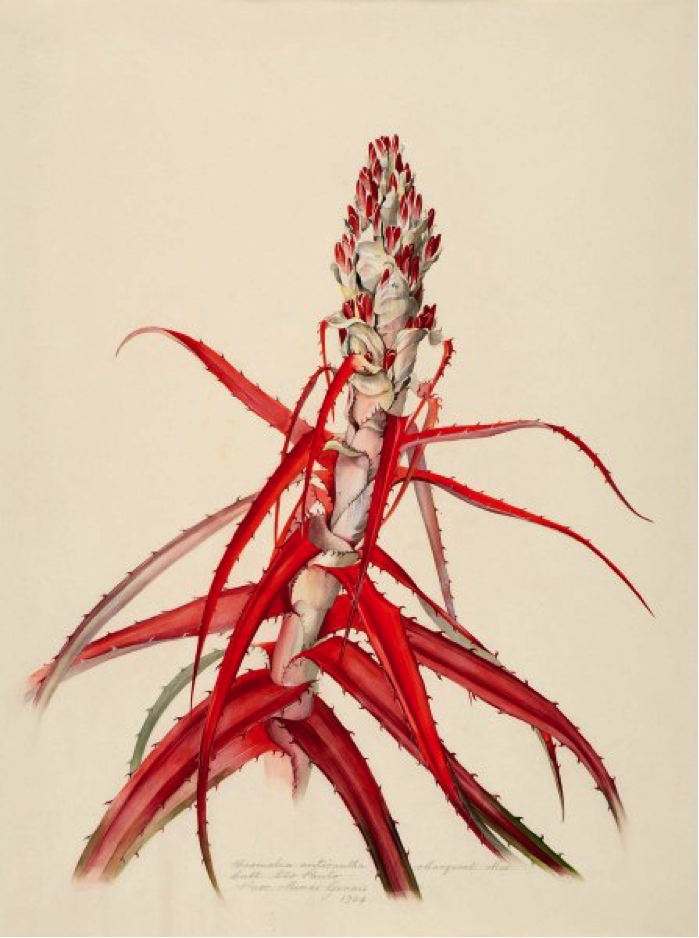
Margaret Mee, née Brown (1909-1988), was a British contemporary artist considered to be one of the most remarkable women of the twentieth century.1 She was referred to as the premier female explorer of the Brazilian rainforest and an outstanding botanical artist. Her voice was one of the first courageous ones to be raised against the exploitative destruction of Amazonia and she spoke for its conservation until her death.1
Her Early Years
Margaret Ursula Brown was born on May 22, 1909, thirty miles west of London, in Whitehill near Chesham, England.2,3 In her early years she was surrounded by nature, as rural Chesham in the Chiltern Hills was historically known as one of the most wooded parts of Britain.2,3 Mee’s roots were Swedish on her father’s side, and East Anglian on her mother’s side. While young, Mee was known as Peggy, and grew up with two sisters, Catherine and Dora, and a younger brother, John. Her home life was modest, with her father traveling daily to the city for work at the Alliance Assurance Company.2
Due to the family’s distance from any schools and her young age, Mee was taught at home. She was instructed by her mother’s sister, a children’s book illustrator named Ellen Mary Churchman who had been partially deaf since age fifteen.2,3
Her father fought in WWI, and while he was away, Mee and her siblings settled in Hove, a seaside English town, and attended a small school there run on solidly Victorian principles.2,3 Her father did not return from the war until 1922, after which the family moved back to Chesham and at the age of thirteen, Mee went to school in the nearby town of Amersham, where her artistry first surfaced.3
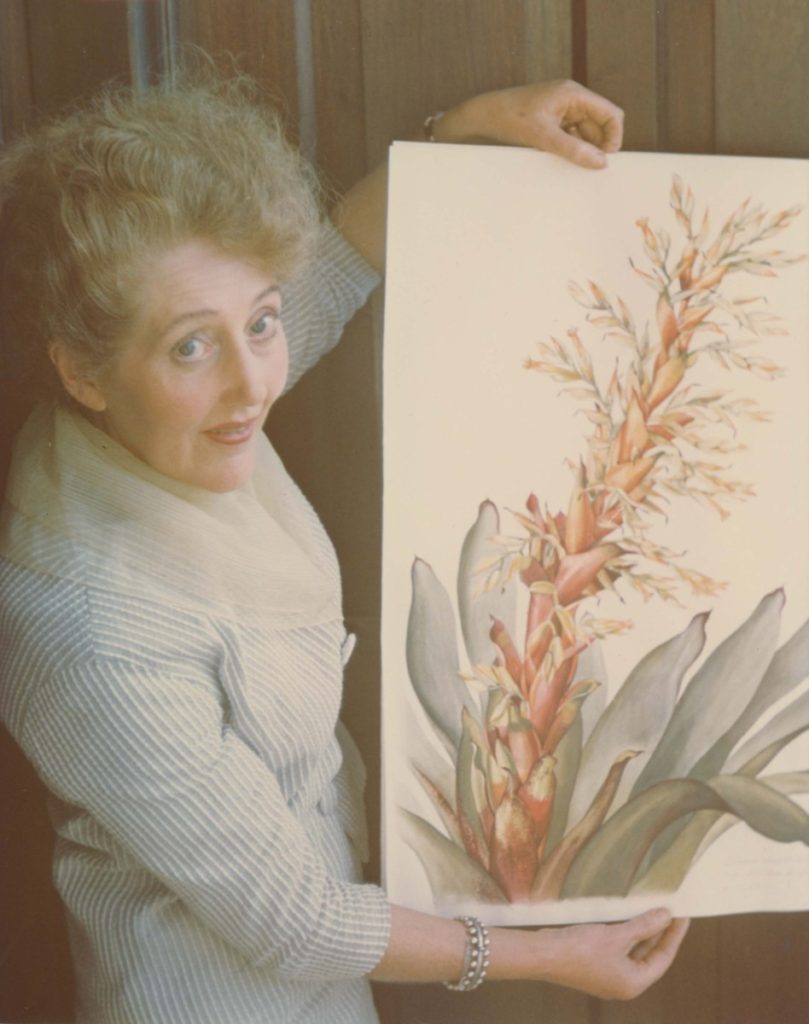
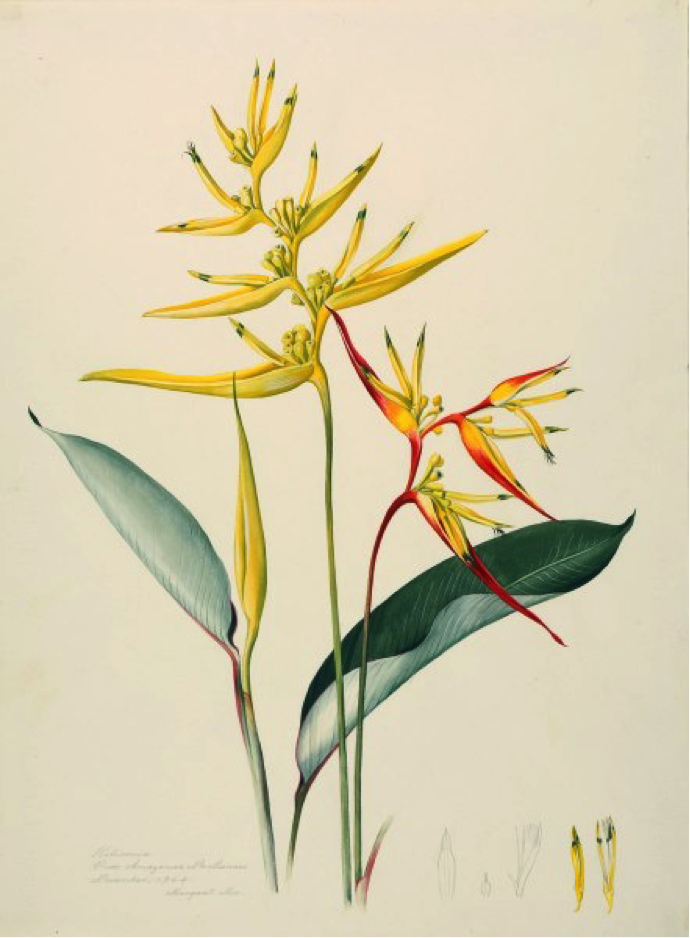
The Study of Art
Mee’s father was a naturalist who encouraged her to pursue her love of nature, and taught her the names of wildflowers.3 In 1926, at the age of 17, she enrolled into the School of Art and Science in Waterford, earning a teaching degree and subsequently landing a teaching position in Liverpool.
However, this was short-lived and soon after, in 1932, she started traveling and eventually moved to Germany to stay with an exchange student, Bruno.2,3 In the 1930s, she moved back to London, after witnessing the atrocities against the Jews in Germany.2,3
In 1945, when the war ended, she entered the prestigious St. Martin’s School of Art in central London, deciding to pursue a career in art, working in a studio and taking night and weekend art classes.2,3
In 1947, she was recommended to the Camberwell School of Art as a full-time student by her teacher, Victor Pasmore, one of Britain’s leading painters. She received a grant for her studies and “marvellous training,” leading to her diploma three years later.2 At St. Martin’s, she first met Greville Mee, a commercial artist from Leicester, England, whom she eventually married in the late 1940s.2,3
Adventures to the Tropics and Life in Brazil
Mee and her husband originally traveled to Sao Paulo, Brazil in 1952 to visit her younger sister, Catherine, when she was unwell.2,3 Mee’s mother, Lizbelle, visited Catherine once for nine months, returning with exciting stories that she shared with Mee.2 The trip to visit her sister introduced Mee to Amazonian wildlife, and marked the start of an extraordinary botanical illustration career.3
Mee moved to Sao Paulo where she taught art at the British School called St. Paul’s, and what she originally envisioned as a three or four year stay, grew into a lifetime.2 From 1956-1988, she journeyed 15 times to the Amazon, where she observed and painted plant specimens in their natural tropical flora habitat. Her husband ran an airbrush equipment business and was a successful commercial artist in Sao Paulo.2
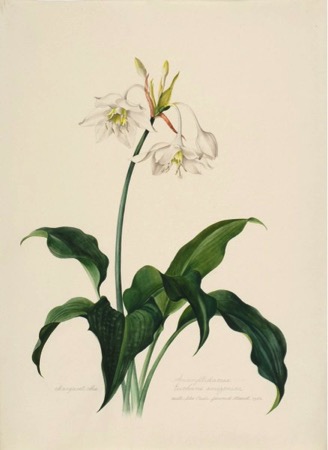
At age 47, in 1956, Mee made her first expedition to the Amazon to collect, observe, sketch, and paint flora, flying with her Dutch friend, Rita (a fellow St. Paul’s teacher) in a small cargo passenger aircraft to Belem at the mouth of the Amazon River while on a January school holiday.2 Belem, the capital of Para state, had the local Goeldi Museum, known as the best source of Amazonian information. Belem was also known as the gateway port to the Amazon where people commuted by river boat.
On subsequent expeditions, Mee traveled in a dugout canoe with a native guide, living in the rainforest for two to three months at a time and eating dehydrated soup boiled in swamp water.3 During these trips, she created detailed field sketches of the plants with records of locality and habitat.1
She searched along the banks of the Rio Negro, for twenty years until finding the rarest Amazon Moonflower, Selenicereus wittii, first in 1965, and then again in 1972. It is a rare night-flowering cactus whose flowers open their petals on just one night each year.1,4 This plant in full bloom had never been painted or photographed in nature before, nor has it been since, and has rarely been recorded by botanists.4
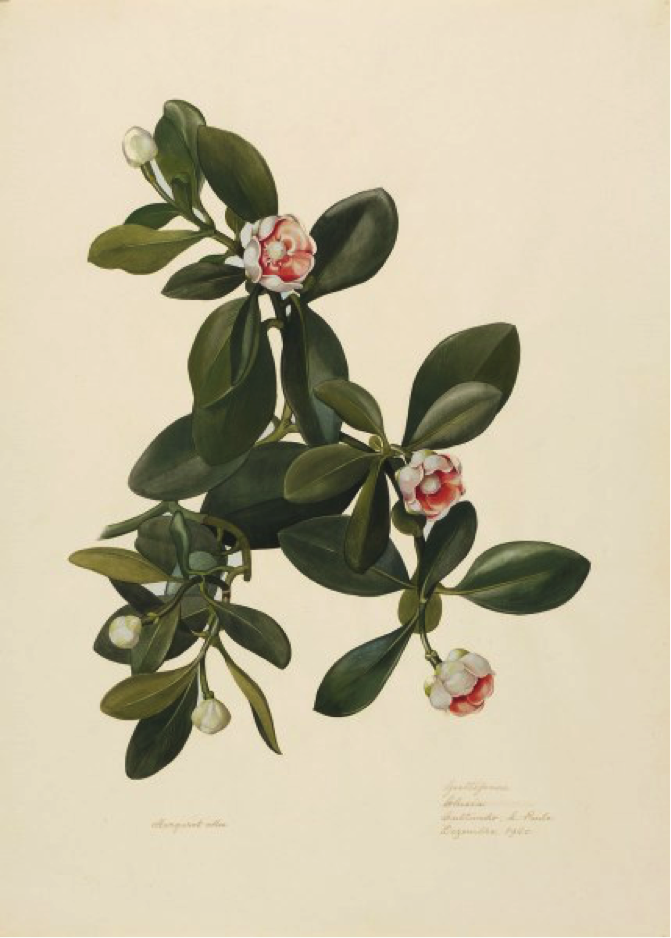
Mee’s expeditions to the Amazon sometimes put her in difficult circumstances. In 1988, when interviewed for American television, she recalled how on an earlier expedition, a gang of prospectors found her alone in her hut. One forced entry. She described this: “He comes in, but I stick my revolver into his stomach, and that gave him a shock, I can tell you.” After this encounter, she described being treated “like a queen.” 8
While not traveling to the Amazon, Mee taught commercial art for five years at St. Paul’s, Sao Paulo’s British School Overseas, a school for students aged 3-18, the first of its kind in South America.3
In 1958, her first exhibit at Sao Paulo’s Instituto de Botanica led to a work contract there. In 1959, an exhibit of her paintings was featured at the Jardim Botanico, in Rio de Janeiro, in their 150th anniversary celebration.3
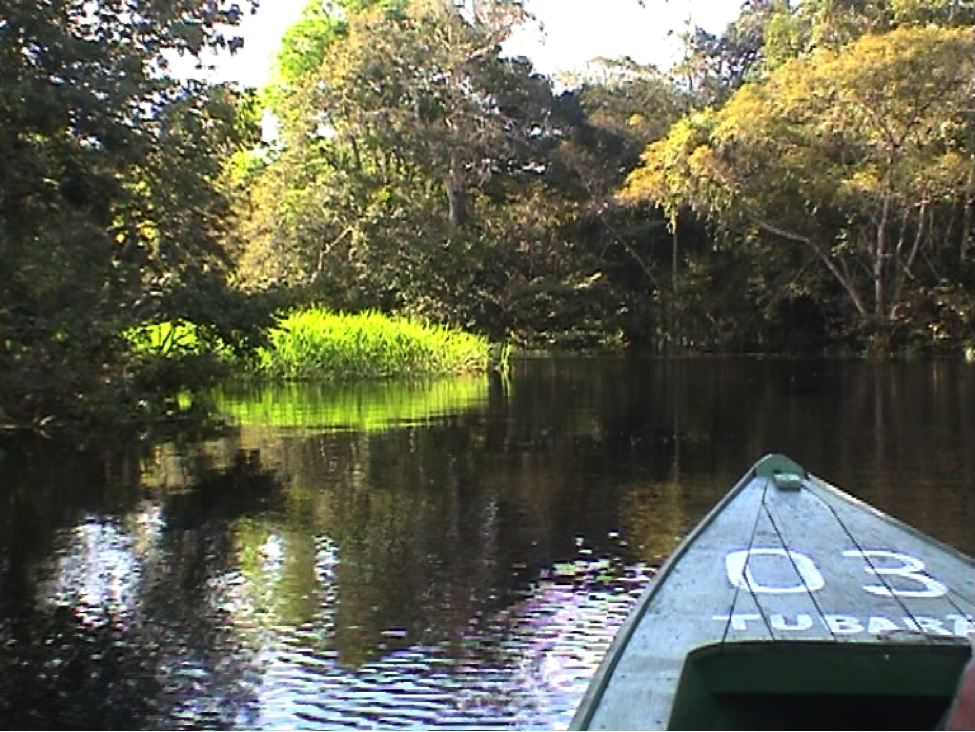
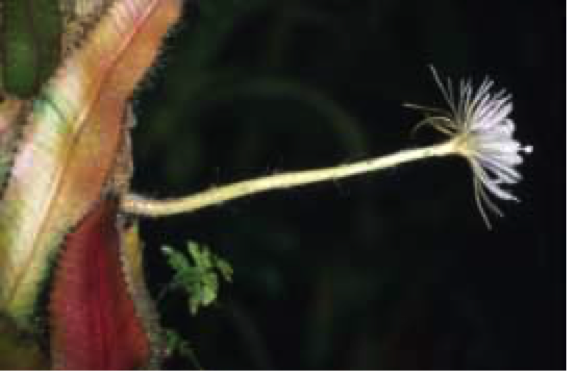
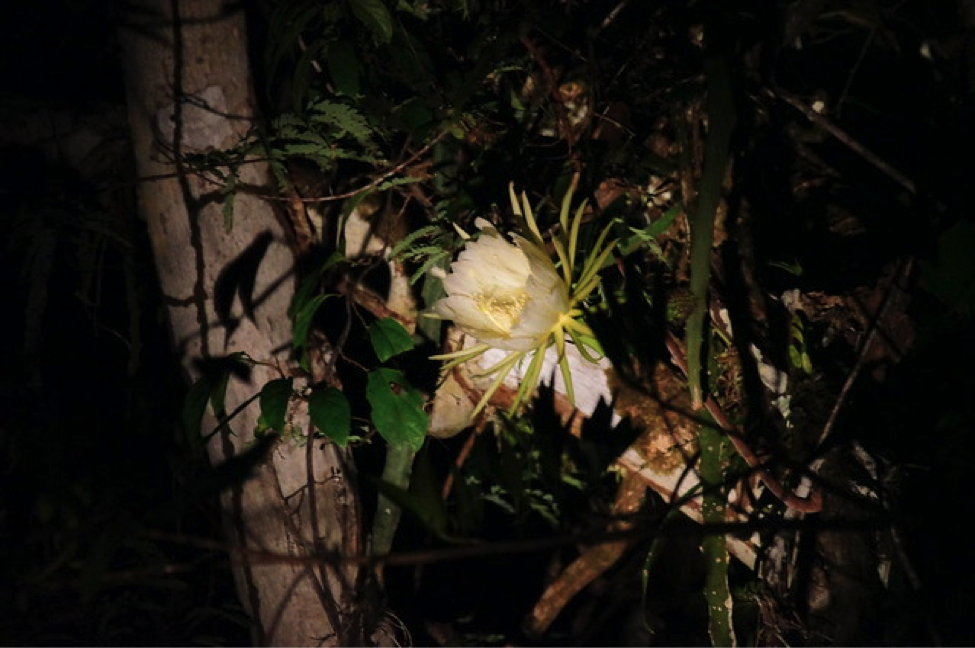
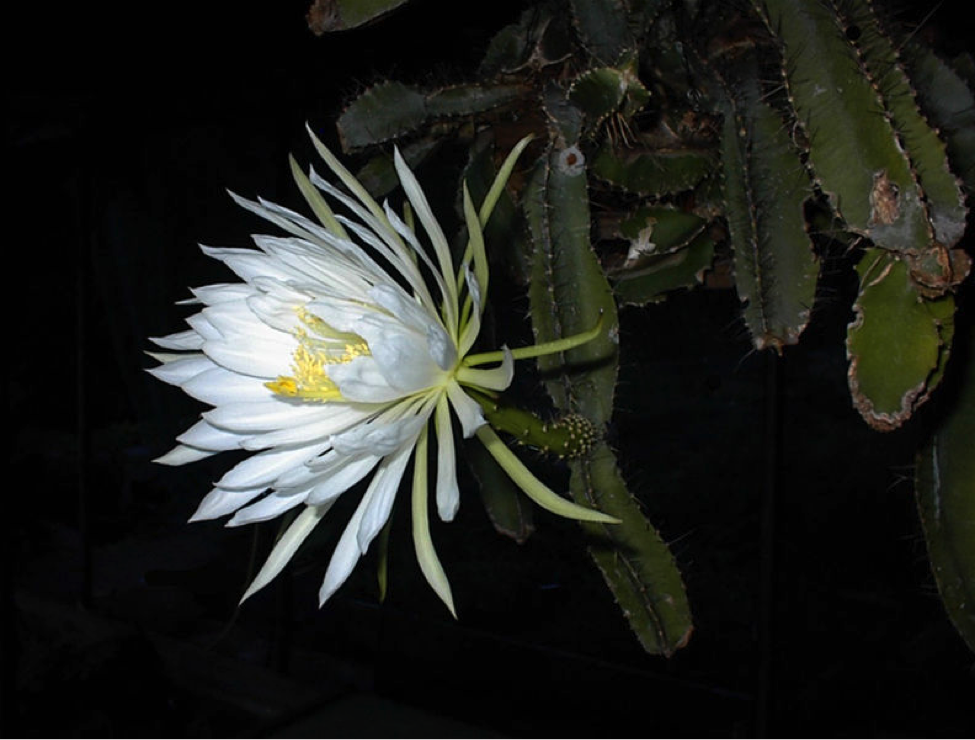
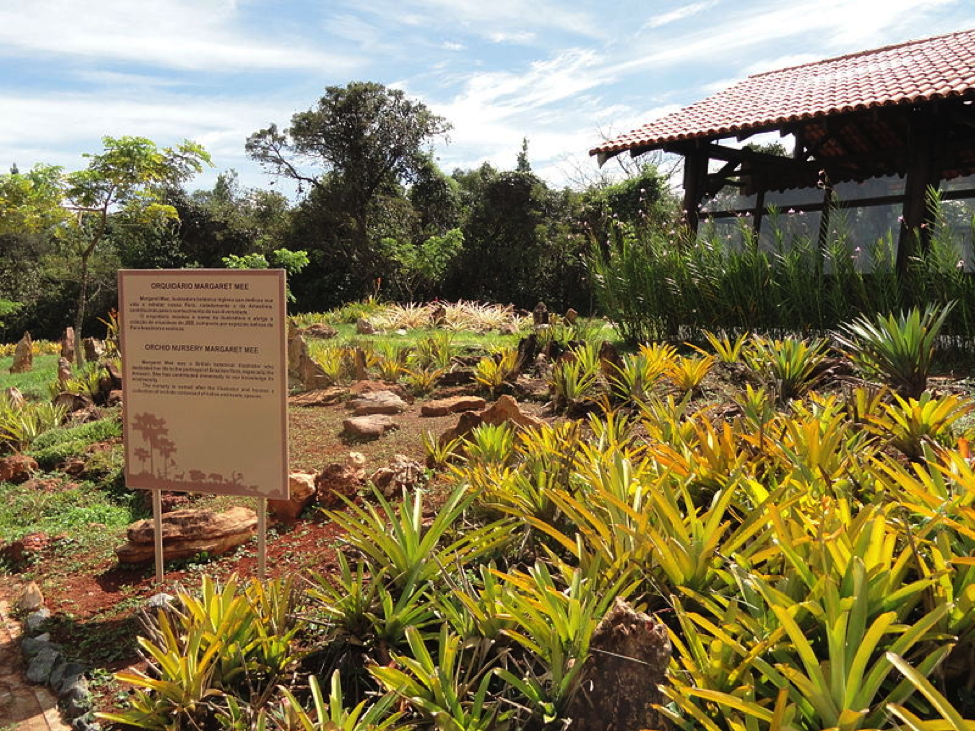
An Accomplished Artist
In 1960, Mee’s paintings were exhibited at the Royal Horticultural Society Botanical Art Show in London and earned her the Grenfell Gold Medal.3,5 After that, she was able to work as a successful freelance artist.5 Her drawings were some of the finest flower drawings, being entirely original, using the medium gouache, an opaque watercolour technique she first used at Camberwell, on Fabriano Raffaello high-quality paper.
Over her thirty-five years in Brazil, Mee wrote and illustrated three books and painted numerous items of the fauna and flora of this tropical region.3 A description of the 2003 book about Mee, called Margaret Mee’s Amazon: Diaries of an artist explorer, focuses on her life. The 1988 book In Search of Flowers of the Amazon Forests describes her artwork, hand-collected plant specimens, some new species which were named after her, her overall contribution to knowledge about the Amazon, and an awareness for the need of its conservation.
In 1976, Mee won the M.B.E./Member of the British Empire award and several other prestigious honors.3 There is also an orchid nursery coined in her name at the Jardim Botanico de Brasilia. Through her artwork and conservation efforts, Mee publicly criticized the Brazilian government’s failure to tackle deforestation, even under military dictatorship there.8
The Margaret Mee Amazon Trust
In 1988, after Mee tragically died in a car crash in England, the Margaret Mee Amazon Trust (MMAT) was founded, to further research and education about Amazonian plant life and conservation.7 It was based in the UK, with immediate aims to raise money for purchasing the Amazon Collection: 60 paintings of Amazonian plants by Margaret Mee for deposit at Kew and the creation of a scholarship scheme to support forest conservation.9 The Trust established scholarships to help Brazilian botanists study in Britain and the Fundação Botânica Margaret Mee (FBMM) was set up in Rio de Janeiro to promote local scholarships within Brazil and international scholarships in collaboration with the MMAT at Kew.6,9 The FBMM made a great impact in Brazil through raising awareness about Margaret Mee’s work, through exhibitions and promotions, archives, promoting botanical illustration through the Brazilian Botanical Society, managing conservation research in the Brazilian Atlantic Forest, and much more.9
In 1996, the Trust dissolved, and from then on worked under the support of the Foundation and Friends of the Royal Botanic Gardens, Kew. The scholarships were renamed the Margaret Mee Fellowship Programme and still work closely with FBMM in Brazil. From 2005 onwards, the programme was restricted to the artist scholarship alone, due to funding constraints.9 Mee was repeatedly applauded and recognized for her contributions to the botanical illustration field. In the words of the world-famous Brazilian landscape architect, Roberto Burle Marx:
Brazil has been and continues to be the land of enchantment for the botanist. One can understand how these regions have fascinated and inspired Margaret Mee. This vast country has more than 650 species of bromeliads; some, like Aechmea polyantha, are known to us only from Margaret Mee’s paintings. To seek out a plant, bring it from its obscurity and reveal it to those who are inspired by Nature, is a true discovery. Each plant is a mystery whose laws challenge us; whose reason for life, whose preferences, dislikes and interrelationships, teach us a lesson which should give us a better understanding of the world in which we live. I admire and respect Margaret Mee, who seeks to portray the intricate beauty of the many plants which have so far passed unnoticed in a world where greed and ambition ruthlessly destroy our wonderful heritage, the gift of life.
Author’s Tribute
Visit our Gallery to view a series of two watercolor paintings by Varsha Mathrani that were inspired by Margaret Mee.
Authored by: Varsha Mathrani
References
- Stiff, Ruth. Margaret Mee: Return to the Amazon. Houston Museum of Natural Science and Royal Botanic Gardens, Kew. Stationery Office. London, 1996.
- Morrison, Tony. Margaret Mee: In Search of Flowers of the Amazon Forests: Diaries of an English Artist reveal the beauty of the vanishing rainforest. Nonesuch Expeditions. Woodbridge, Suffolk, 1988.
- Kramer, Jack. Women of Flowers: A Tribute to Victorian Women Illustrators. Stewart, Tabori & Chang. New York, 1996.
- Margaret Mee and the moonflower. Retrieved from: https://johnryle.com/?article=margaret-mee-and-the-moonflower
- About Margaret Mee (1909-1988). Retrieved from: https://www.botanicalartandartists.com/about-margaret-mee.html
- Margaret Mee Dies; Amazon Artist Was 79. NY Times. Dec. 4, 1988. https://www.nytimes.com/1988/12/04/obituaries/margaret-mee-dies-amazon-artist-was-79.html
- Margaret Mee’s Amazon. Diaries of an Artist Explorer. Book Review by Pia Parolin. Annals of Botany, Volume 95, Issue 6, May 2005, p. 1067–1068, https://doi.org/10.1093/aob/mci118. https://academic.oup.com/aob/article/95/6/1067/189834 https://www.researchgate.net/publication/256170296_Margaret_Mee’s_Amazon_Diaries_of_an_Artist_Explorer_Book_Review https://www.ncbi.nlm.nih.gov/pmc/articles/PMC4246765/
- Margaret Mee: defending the Amazon with a brush and a gun. Financial Times. Mar. 16, 2018. https://www.ft.com/content/96592878-1d4a-11e8-a748-5da7d696ccab
- Kew Royal Botanic Gardens. Tropical America: Botany and conservation at Kew. Background to the Margaret Mee Fellowship Programme. http://www.kew.org/science/tropamerica/Meebackground.htm
Photo Credits
- Bromelia anticantha Cultivated in São Paulo. Procured from Minas Gerais. Margaret Mee, 1964. Permission for reproduction received from Dumbarton Oaks Research Library and Collection, Rare Book Collection, Washington, D.C., Online Exhibits, Highlights from the Collections, Margaret Mee, The Paintings. https://www.doaks.org/resources/online-exhibits/margaret-mee/the-paintings/15
- Mee, Margaret Ursula [Mrs. Greville R. B.] Courtesy of Hunt Institute for Botanical Documentation, Carnegie Mellon University, Pittsburgh, PA. Photograph by Walter Henricks Hodge.
- Orchid Nursery Margaret Mee, Jardim Botânico de Brasília, Brasilia, Brazil
- Amaryllidaceae, Eucharis amazonica, Cultivated in São Paulo. Margaret Mee. Flowered March 1958. Permission for reproduction received from Dumbarton Oaks Research Library and Collection, Rare Book Collection, Washington, D.C., Online Exhibits, Highlights from the Collections, Margaret Mee, The Paintings. https://www.doaks.org/resources/online-exhibits/margaret-mee/the-paintings/7
- Guttiferae, Clusia. Cultivated in São Paulo. Margaret Mee, December 1960. Permission for reproduction received from Dumbarton Oaks Research Library and Collection, Rare Book Collection, Washington, D.C., Online Exhibits, Highlights from the Collections, Margaret Mee, The Paintings. https://www.doaks.org/resources/online-exhibits/margaret-mee/the-paintings/1
- Heliconia, Procured from Amazonas, Near Manaus. Margaret Mee, November 1964. Permission for reproduction received from Dumbarton Oaks Research Library and Collection, Rare Book Collection, Washington, D.C., Online Exhibits, Highlights from the Collections, Margaret Mee, The Paintings. https://www.doaks.org/resources/online-exhibits/margaret-mee/the-paintings/4
- https://commons.wikimedia.org/wiki/File:Orchid_Nursery_Margaret_Mee_Jardim_Bot%C3%A2nico_de_Bras%C3%ADlia_-_DSC09760.JPG
- Orchid Nursery Margaret Mee, Jardim Botânico de Brasília, Brasilia, Brazil https://commons.wikimedia.org/wiki/File:Orchid_Nursery_Margaret_Mee_Jardim_Bot%C3%A2nico_de_Bras%C3%ADlia_-_DSC09745.JPG
- Orchids, Orchid Nursery Margaret Mee, Jardim Botânico de Brasília, Brasília, Brazil. https://commons.wikimedia.org/wiki/File:Orchids_-_Orchid_Nursery_Margaret_Mee_-_DSC09754.JPG
- Cattleya chocolate – Orchid Nursery Margaret Mee, Jardim Botânico de Brasília, Brasília, Brazil. https://commons.wikimedia.org/wiki/File:Cattleya_chocolate_Orchid_Nursery_Margaret_Mee_-_DSC09742.JPG
- Orchids, Orchid Nursery Margaret Mee, Jardim Botânico de Brasília, Brasília, Brazil. https://commons.wikimedia.org/wiki/File:Orchids_-_Orchid_Nursery_Margaret_Mee_-_DSC09741.JPG
- Cyrtopodium santlegerianum Botanical specimen in the Orchid Nursery Margaret Mee, Jardim Botânico de Brasília, Brasília, Brazil. https://commons.wikimedia.org/wiki/File:Cyrtopodium_santlegerianum__Orchid_Nursery_Margaret_Mee_-_DSC09753.JPG
- Rio Negro (Amazon). Photo by Miquel Girones, September 20, 2008. Public domain. https://commons.wikimedia.org/wiki/File:Rio_negro_-_amazones.png
- Strophocactus wittii, leaves and flowers. Photo by Wilhelm Barthlott, January 1988. Free to use, Wikimedia, Creative Commons. https://commons.wikimedia.org/wiki/File:Strophocactus_wittii_1-88_Foto_W.Barthlott.jpg
- Amazonian moonflower, a night flowering species of the Amazon. Photo by Tim Ellis, August 13, 2018. Free to share, Creative Commons License: Attribution-NonCommercial 2.0 Generic (CC BY-NC 2.0). https://www.flickr.com/photos/tim_ellis/29643989257
- Strophocactus testudo, Photo by: Ulf Eliasson, November 30, 2006. Free to share, Creative Commons Attribution-Share Alike 2.5 Generic license. https://commons.wikimedia.org/wiki/File:Strophocactus_testudo13UE.jpg

